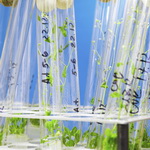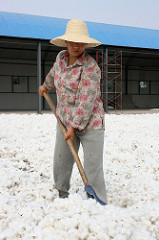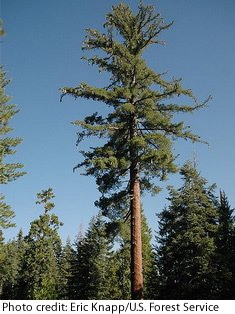CROP BIOTECH UPDATE
---------------------------------------------------------------------------
A weekly summary of world developments in agri-biotech for developing countries, produced by the Global Knowledge Center on Crop Biotechnology, International Service for the Acquisition of Agri-biotech Applications SEAsiaCenter (ISAAA)
---------------------------------------------------------------------------
January 6, 2016
In This Week’s Issue:
News
Global
BIO Changes Name to Highlight Importance of Innovation in Biotech
Africa
Kenyan Regulator to Release Decision on GM Crops This Month
Americas
Scientists to Develop HT Sugar Beet with Three Modes of Action
Research Shows Plants Find Light Using Cellular Sensors
How Arsenic Builds Up in Plant Seeds Discovered
Asia and the Pacific
Radish Transcription Factor Activates Anthocyanin Production in Arabidopsis
Research Team Improves Drought and Salt Tolerance in Cotton and Poplar Using Arabidopsis Gene
USDA FAS Releases China GAIN Report on Agribiotech
Europe
Plants Predict Infections Using a Molecular Clock
Research
Scientists Overexpress Cucumber Gene in Maize Seed for Cellulose Deconstruction
Overexpression of Amur Grape Gene Confers Abiotic Stress Tolerance to Arabidopsis
Sunflower Enzyme Improves Agronomic Traits in Tobacco
Beyond Crop Biotech
California Sugar Pine Genome Sequenced
Announcements
InterDrought-V Conference
Document Reminders
ISAAA Blog: Crop Biotech Update's Trending Stories in 2015
----
NEWS
----
Global
BIO CHANGES NAME TO HIGHLIGHT IMPORTANCE OF INNOVATION IN BIOTECH
The Biotechnology Industry Organization, a biotech trade association representing biotech companies, academic institutions, state biotech centers and related organizations across 30 countries, has changed its name to Biotechnology Innovation Organization. According to BIO, the change of name better reflects the remarkable progress and groundbreaking innovations its members attain in healing, fueling, and feeding the world.
"Our members are some of the most innovative people on the planet. Biotech companies and research institutions are filled with scientists and entrepreneurs who see' a different future. And then they innovate to change the course of history," said BIO President and CEO Jim Greenwood. "Everything we do is focused on improving the world we live in," he added.
Read the media release from BIO.
Africa
KENYAN REGULATOR TO RELEASE DECISION ON GM CROPS THIS MONTH
 The Kenya National Biosafety Authority is expected to release their decision on the application of the Kenya Agriculture and Livestock Research Organization (KALRO) and African Agricultural Technology Foundation to release biotech maize seeds. According to NBA chief executive Willy Tonui, the decision will be made this month about biotech maize, while the second ruling in February will touch on biotech cotton.
The Kenya National Biosafety Authority is expected to release their decision on the application of the Kenya Agriculture and Livestock Research Organization (KALRO) and African Agricultural Technology Foundation to release biotech maize seeds. According to NBA chief executive Willy Tonui, the decision will be made this month about biotech maize, while the second ruling in February will touch on biotech cotton.
Kenya prohibited the planting and importation of biotech maize, locking out major exporters including South Africa from the local market which faces frequent grain shortage. Thus, the scientists are pressing for the release of biotech seeds to farmers to increase production of crops.
Read more from AllAfrica.
Americas
SCIENTISTS TO DEVELOP HT SUGAR BEET WITH THREE MODES OF ACTION
Scientists from two seed companies are developing biotech sugar beet to better fight weeds. This new variety is tolerant to three different herbicides: glyphosate, glufosinate, and dicamba. This news was reported by Aaron Hummer, a researcher from Germany-based KWS Saat, during the Snake Rive Sugar Conference held last December. According to Hummel, the combination of the three traits stacked into one variety should prevent the spread of herbicide-resistant weeds because any weed resistant to any of the three modes of action would be killed by the others.
The new variety is being developed by KWS Saat and Monsanto. Trials and development will occur over the next three years and the new variety is expected to become available in the market in 8 to 10 years.
Read more from Capital Press.
RESEARCH SHOWS PLANTS FIND LIGHT USING CELLULAR SENSORS
Scientists at the Salk Institute have discovered a way by which plants assess light to outgrow their neighbors. The study shows how the depletion of blue light detected by molecular sensors in plants triggers accelerated growth to overcome a competing plant.
The new study changes the previously believed concept that plants respond to diminished red light by activating the growth hormone auxin to outpace its neighbors. However, this is the first time researchers have shown that instead of changing auxin levels, plants use cellular sensors called cryptochromes that respond to diminished blue light by turning on genes promoting cell growth.
Cryptochromes are blue light-sensitive sensors responsible for plant growth and flowering. They were first identified in plants, but are also found in animals, and in both organisms, they are associated with circadian rhythm.
For more information, read the Salk News.
HOW ARSENIC BUILDS UP IN PLANT SEEDS DISCOVERED
 Researchers from Florida International University (FIU) are part of an international team of scientists that has discovered how arsenic builds up in the seeds of plants similar to rice.
Researchers from Florida International University (FIU) are part of an international team of scientists that has discovered how arsenic builds up in the seeds of plants similar to rice.
Professor Barry P. Rosen's team at FIU discovered that Arabidopsis thaliana uses transport systems for inositol, a type of sugar, to load arsenite, the toxic form of arsenic, into seeds. This is the first identification of transporters responsible for arsenic accumulation in seeds. Rosen predicts that the same pathway could be present in rice grains and these discoveries will enable the development of new rice cultivars with less arsenic in the grain.
Arsenic, both a toxin and a carcinogen, comes from minerals and is used in some herbicides, animal growth promoters, and semiconductors. It is a pervasive environmental contaminant of food and water that threatens the health of tens of millions people worldwide.
For more details, read the FIU news release.
Asia and the Pacific
RADISH TRANSCRIPTION FACTOR ACTIVATES ANTHOCYANIN PRODUCTION IN ARABIDOPSIS
Anthocyanins are flavonoid-derived pigments with strong antioxidant activity which are beneficial to humans. The team of Sun-Hyung Lim from the National Academy of Agricultural Science of Rural Development Administration in South Korea isolated RsMYB1, an anthocyanin promoting transcription factor (TF) from red radish (Raphanus sativus L.).
Expression of RsMYB1 in tobacco showed that it is a better positive regulator of anthocyanin production than another regulator, the basic helix-loop-helix (bHLH) TF gene B-Peru. Arabidopsis plants expressing RsMYB1 also produced red pigmentation throughout the plant, with upregulation of the eight genes related to anthocyanin production.
RsMYB1 is a positive regulator for anthocyanin biosynthesis in radish plants and it might be one of the best targets for improving anthocyanin production by single gene manipulation.
Read the article in Plant Cell Reports for more information.
RESEARCH TEAM IMPROVES DROUGHT AND SALT TOLERANCE IN COTTON AND POPLAR USING ARABIDOPSIS GENE
Researchers led by Lin-Hui Yu from the University of Science and Technology of China, reported that the Arabidopsis ENHANCED DROUGHT TOLERANCE1/ HOMEODOMAIN GLABROUS11 (AtEDT1/HDG11) also confers drought and salt tolerance in cotton (Gossypium hirsutum) and the woody plant poplar (Populus tomentosa Carr.). Although the gene has been known to confer tolerance to crops such as rice and Arabidopsis, this was the first time it was used for both cotton and poplar.
Both the transgenic cotton and poplar exhibited enhanced tolerance to drought and salt stress. Furthermore, the transgenic cotton showed significant improvement in drought tolerance and better agronomic performance with higher cotton yield in the field both under normal and drought conditions.
Their results demonstrate that AtHDG11 is a promising candidate gene for improving drought and salt of crops and woody plants.
For more information on the study, read the article in Plant Biotechnology Journal.
USDA FAS RELEASES CHINA GAIN REPORT ON AGRIBIOTECH
 The USDA Foreign Agricultural Service release the Global Agricultural Information Network (GAIN) report on the agricultural biotechnology updates in China in 2015.
The USDA Foreign Agricultural Service release the Global Agricultural Information Network (GAIN) report on the agricultural biotechnology updates in China in 2015.
According to the report, China is one of the largest producers and importers of biotech crops globally. It produces biotech cotton, but has not yet approved any major biotech crop recently. The Chinese government is currently revising its biotechnology regulatory system. In May 2015, the Ministry of Agriculture (MOA) released a draft revision to its biotech regulations that would remove timelines for approvals and add economic and social factors to the approval process for the first time. It was also reported that the government is preparing to commercialize biotech corn.
Get a copy of the report from USDA FAS.
Europe
PLANTS PREDICT INFECTIONS USING A MOLECULAR CLOCK
New research conducted at the University of Warwick shows that plants can predict when infections are more likely to occur, and regulate their immune response accordingly. Previous research had shown that resistance against bacterial pathogens varied at different times of the day. The new research, however, has for the first time shown that the same is true for resistance against a fungal pathogen. The new research is also the first to identify a mechanism of how the internal plant clock is driving the difference in plant immunity at dawn and night.
According to lead researcher Dr. Katherine Denby, plants are more resistant to infection at dawn, when they anticipate infection. The difference in plant resistance to infection at different times of the day is driven by its circadian clock rather than the daily light/dark changes.
Read more at Warwick News and Events.
Research
SCIENTISTS OVEREXPRESS CUCUMBER GENE IN MAIZE SEED FOR CELLULOSE DECONSTRUCTION
Plant cell wall degradation into fermentable sugars by cellulases is one of the greatest barriers to biofuel production. A study from Arkansas State University Biosciences Institute in the U.S.A., led by Sangwoong Yoon of the University of California, overexpressed the cucumber expansin gene, Cs-EXPA1, in maize kernels and assessed its potential to serve as an industrial enzyme for applications in biomass conversion.
The level of expansin accumulation in seeds of transgenic kernels was evaluated and the highest expressing plants were chosen. The activity of cucumber expansin from transgenic kernels was then evaluated on pretreated lignocellulosic substrates. The best transgenic lines were selcted and can now be used for breeding to increase expansin expression for use in the biomass conversion industry.
Results of the experiment show the success of expansin over-expression and accumulation in transgenic maize seed without negative impact on growth and development and confirm its effect on deconstruction of cell wall substrates.
For more information, read the article in Transgenic Research.
OVEREXPRESSION OF AMUR GRAPE GENE CONFERS ABIOTIC STRESS TOLERANCE TO ARABIDOPSIS
The plant-specific GRAS transcription factor family regulates diverse processes involved in plant growth, development, and stress responses. The team of Yangyang Yuan from Chinese Academy of Sciences isolated and characterized, VaPAT1, a GRAS gene from Amur grape (Vitis amurensis).
VaPAT1 was found similar to function in stress resistance. Its transcription was induced by stress-related phytohormone abscisic acid (ABA) and various abiotic stress treatments such as cold, drought, and high salinity. However, it was repressed by exogenous gibberellic acid (GA) application.
Overexpression of VaPAT1 increased abiotic stress tolerance in transgenic Arabidopsis. The VaPAT1-overexpressing lines also accumulated higher levels of proline and soluble sugar under stress conditions. Stress-related genes also showed higher expression in VaPAT1 transgenic lines than in wild types under normal growth conditions.
These indicate that VaPAT1 is a positive transcriptional regulator involved in grapevine abiotic stress responses.
For more information on the study, read the article in Plant Cell Reports.
SUNFLOWER ENZYME IMPROVES AGRONOMIC TRAITS IN TOBACCO
Geranylgeranyl pyrophosphate synthase (GGPS) is a key enzyme for a structurally diverse class of isoprenoid biosynthetic metabolites. The team of Sandeep Kumar Tata of the University of Science and Technology in South Korea expressed a chloroplast-targeted GGPS from sunflower (Helianthus annuus) in tobacco (Nicotiana tabacum).
The transgenic tobacco plants expressing GGPS showed enhanced growth, early flowering, increased number of seed pods and greater seed yield compared to wild-type plants. The gibberellin levels in HaGGPS-transgenic plants were also higher, suggesting that the observed phenotype may be from increased gibberellin content. However, phenotypic defects previously reported for transgenic plants expressing gibberellin biosynthetic genes were absent.
The results of this study suggest that GGPS expression in crop plants may yield desirable agronomic traits. This research has potential applications for fast production of plant biomass that provides commercially valuable biomaterials or bioenergy.
To read learn more, vread the full article in Plant Biotechnology Journal.
Beyond Crop Biotech
CALIFORNIA SUGAR PINE GENOME SEQUENCED
 A team of researchers led by University of California Davis scientists have sequenced the genome of California's legendary sugar pine, called "king of conifers" by naturalist John Muir.
A team of researchers led by University of California Davis scientists have sequenced the genome of California's legendary sugar pine, called "king of conifers" by naturalist John Muir.
The sugar pine genome is the largest ever sequenced for any organism, at 10 times the size of the human genome. It is expected to provide valuable information that may help preserve the iconic but imperiled tree.
The sugar pine, one of the tallest tree species in the world, is endemic to California. Its survival is threatened by white pine blister rust, damage from bark beetles, and drought. The newly sequenced sugar pine has a genome 1.5 times larger than the loblolly pine, which itself was considered large when it was sequenced. These two new reference sequences serve as foundations for future studies and applications in pine trees.
The genome for the sugar pine has been publicly released and is available through open access at the Pine Reference Sequences website.
For more information, read the UC Davis news release.
Announcements
INTERDROUGHT-V CONFERENCE
What: InterDrought-V Conference (ID-V)
Where: Hyderabad International Convention Center, Hyderabad, India
When: February 21-25, 2017
Preliminary information about ID-V is available at the http://ceg.icrisat.org/idv/. For more details, contact the conference organizer, Rajeev K. Varshney at r.k.varshney@cgiar.org.
Document Reminders
ISAAA BLOG: CROP BIOTECH UPDATE'S TRENDING STORIES IN 2015
ISAAA presents the top 10 trending news on crop biotech based on the most number of Facebook shares from the website, providing insight into what people find interesting about biotech in 2015.
News such as farmers approval of GM crops, research advancements, GMO safety, biotech event approvals, and beauty queens made it to the list. So sit back and read these fascinating stories that you might have missed.
Read the trending biotech news in the ISAAA Blog.
(c) 2024. ISAAA.
 The Kenya National Biosafety Authority is expected to release their decision on the application of the Kenya Agriculture and Livestock Research Organization (KALRO) and African Agricultural Technology Foundation to release biotech maize seeds. According to NBA chief executive Willy Tonui, the decision will be made this month about biotech maize, while the second ruling in February will touch on biotech cotton.
The Kenya National Biosafety Authority is expected to release their decision on the application of the Kenya Agriculture and Livestock Research Organization (KALRO) and African Agricultural Technology Foundation to release biotech maize seeds. According to NBA chief executive Willy Tonui, the decision will be made this month about biotech maize, while the second ruling in February will touch on biotech cotton.  Researchers from Florida International University (FIU) are part of an international team of
Researchers from Florida International University (FIU) are part of an international team of  The USDA Foreign Agricultural Service release the Global Agricultural Information Network (GAIN) report on the
The USDA Foreign Agricultural Service release the Global Agricultural Information Network (GAIN) report on the  A team of researchers led by University of California Davis scientists have sequenced the genome of California's legendary sugar pine, called "king of conifers" by naturalist John Muir.
A team of researchers led by University of California Davis scientists have sequenced the genome of California's legendary sugar pine, called "king of conifers" by naturalist John Muir.